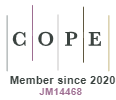Supply and Demand for Health Services in a Sanitary Territory as a Contribution to the Health Care and Health Management
DOI:
https://doi.org/10.5585/rgss.v4i2.162Keywords:
Health services needs and demand, Health care, Health management, Delivery of health care, Health inequalities.Abstract
This study aimed to analyze the supply and demand for health services of health territory. An exploratory and longitudinal-retrospective study, with secondary data of Santo Amaro´s district in São Paulo, for the period 2000-2012, available at the Computer Science Department of the Unified Health System (DATASUS). 30 health facilities were identified, as well as the geographic concentration of most of them. The population of the city increased by 7.9%, comparing the years 2000 to 2010, while in the district analyzed the increase was 8.9%. In the place of study, the age range from 60 and over had the highest increase (36.6%), especially for those aged from 95 to 99 years increased by 109.7%. The principal causes of hospitalization were: pregnancy, childbirth and postpartum (27.6%), respiratory diseases (12.3%), digestive (12.2%), injuries, poisoning and certain other consequences of external causes (10,2%) and circulatory (10.1%) problems. The main causes of death were cardiovascular diseases (32.7%), cancer (22.6%), respiratory diseases (14.2%), external causes (9.7%) and diseases of the digestive system (5.7%). We conclude that the analyzed district offered diversity in health services. However, it had little impact on the morbidity and mortality, since there was no reduction in the pattern of illness and death of the population. Therefore, we recommend a collective discussion about the asymmetry between supply and demand for health services, so as to contribute to the effectiveness of health care and health management.Downloads
Downloads
Published
How to Cite
Issue
Section
License
Copyright (c) 2019 Revista de Gestão em Sistemas de Saúde – RGSS

This work is licensed under a Creative Commons Attribution-NonCommercial-NoDerivatives 4.0 International License.
Autores mantém os direitos autorais e concedem à revista o direito de primeira publicação, com o trabalho simultaneamente licenciado sob a Creative Commons Atribuição - Não comercial - Compartilhar igual 4.0 Internacional que permite o compartilhamento do trabalho com reconhecimento da autoria e publicação inicial nesta revista.
Autores têm autorização para assumir contratos adicionais separadamente, para distribuição não-exclusiva da versão do trabalho publicada nesta revista (ex.: publicar em repositório institucional ou como capítulo de livro), com reconhecimento de autoria e publicação inicial nesta revista.
Autores têm permissão e são estimulados a publicar e distribuir seu trabalho online (ex.: em repositórios institucionais ou na sua página pessoal) a qualquer ponto antes ou durante o processo editorial, já que isso pode gerar alterações produtivas, bem como aumentar o impacto e a citação do trabalho publicado (Veja O Efeito do Acesso Livre) em http://opcit.eprints.org/oacitation-biblio.html


